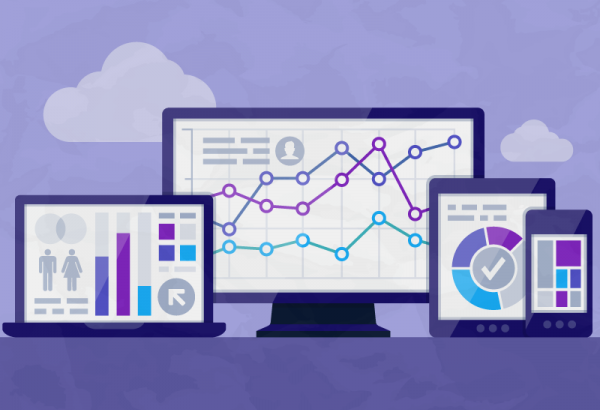Healthcare provider organizations find themselves in a challenging environment today, recovering from pandemic fallout while dealing with increased competition and ongoing consolidations.
Regardless of the challenge, long-term business imperatives remain clear — identifying opportunities and implementing plans to grow strategically, transform costs, improve quality outcomes, and optimize reimbursements.
“Multi-tasking enterprise” is an apt phrase to describe today’s healthcare provider organizations. That phrase also illustrates how a broader set of stakeholders must collaborate to effectively leverage data to guide decision-making and improve outcomes.
Embracing data and analytics to guide decision-making requires a trusted tool that can effectively support a growing number of stakeholders as organizations measure and manage performance across a broader set of measures.
Effectively using decision support solutions to make better decisions requires healthcare organizations to take four key steps:
- Introduce next-generation cost accounting capabilities (Part 1 of this blog series)
- Establish a cloud-based platform that can scale to meet the needs of large enterprise organizations (Part 2)
- Deliver actionable data to a broad set of stakeholders
- Guide planning by evolving analytics from retrospective to predictive (Part 4)
Part 3 of this blog series focuses on how a robust enterprise decision support tool empowers stakeholders to make data-driven decisions to navigate today’s difficult healthcare finance environment.
Meeting the Growing Demand for Analytics
Decision support tools serve a critical role in bringing data together across an increasing number of financial, clinical, operational, and external sources. While understanding costs is foundational, analyses performed by today’s large healthcare provider organizations require data be combined from an ever-larger number of internal and external data sources, then calculated and extrapolated in a way that stakeholders can readily utilize.
A robust decision support platform helps organizations quantify the financial impact of every decision they make across departments.
Finance & Strategy Teams – Inform Strategic Planning Decisions
Finance teams leverage decision support analytics to provide insights into volume trends, including how shifts in case volume and care settings impact workload demands and financial outcomes. It’s critical that organizations have the right analytical tools to evaluate these trends across any number of service lines or cohort populations.
Clinical Performance Improvement – Understanding the Cost of Quality
Syntellis’ 2021 Healthcare Financial Trends Report shows that 82% of healthcare finance leaders cited cost management and reductions as very important to helping their organizations maintain or rebuild their fiscal health.
Since the low-hanging fruit has been plucked, efforts to transform costs are shifting to more challenging areas, including engaging clinical leaders to identify, quantify, and prioritize opportunities to reduce unwarranted care variation. Ascertaining clinical quality data and insights were rated as important or very important to performance reporting initiatives and goals by 87% of respondents to the Syntellis survey.
Modern decision support platforms effectively integrate cost and quality outcomes to provide insights into improvement opportunities and empower finance leaders to compare performance against internal targets and external peer groups.
Payer Relations – Navigating Payment Reform and Optimizing Reimbursement
As downward pressure on reimbursement continues, payer relations teams help model — and quantify — the financial impact of ongoing payment reform. Decision support platforms provide important analytics to strengthen reimbursement optimization, including integrating a broader set of quality and safety-related measures that will drive revenue.
Required Capabilities for the ‘Multi-tasking’ Enterprise
To meet stakeholder demands for analytics, high-performing organizations are evolving their decision support capabilities and using data effectively to guide action following these 5 steps:
- Knowing your data and educating continuously — A trusted analytical source gives finance teams confidence in the data and the methodologies so they can effectively educate the organization on how the data is evolving.
- Establishing a complete picture — As patient care continues to shift to outpatient settings, decision support tools need robust data extensibility, so sources across the continuum of care — including hospitals, physician offices, and health plans — can securely access patient data.
- Providing timely access — The pandemic highlighted the need for rapid data exchange between source systems and decision support tools. Many organizations have replaced monthly updates with more timely daily updates, or even hourly numbers.
- Being more agile and responsive — Managing today’s challenging healthcare business environment raises many complex questions. To find needed answers, finance teams must have access to advanced ad hoc analysis tools for self-service reporting to their key stakeholders.
- Providing context to the data — The collaboration between finance and clinical leaders continues to drive improved cost and quality outcomes. The answer to the key question —where can we improve as an organization? — starts with expanding decision support analytics to incorporate traditional cost measures, new metrics, external data, and benchmarking information to highlight improvement opportunities.
Data is the lifeblood of every hospital and health system. Effectively navigating the challenges of today’s healthcare industry requires provider organizations to leverage and analyze data from inside and outside their walls to guide decision-making across a broader set of stakeholders.
Organizations that can effectively integrate data into a single trusted source and disseminate that data across stakeholders to support data-driven decision-making will have a competitive advantage.
Axiom™ Enterprise Decision Support drives performance and decision-making with a single, trusted source of financial and clinical performance measures, with insightful views of volume, cost, and profitability measures. Cutting-edge cost accounting tools with sophisticated cost assignment methods provide transparency into performance across patient populations and service lines. Part 4 of this series will show how to make better decisions by using predictive data, rather than retrospective data.
Read more from the series:

Strategic Decision Support, Part 1: Next-Generation Cost Accounting

Strategic Decision Support, Part 2: Benefits of a Cloud-Based EPM Solution


